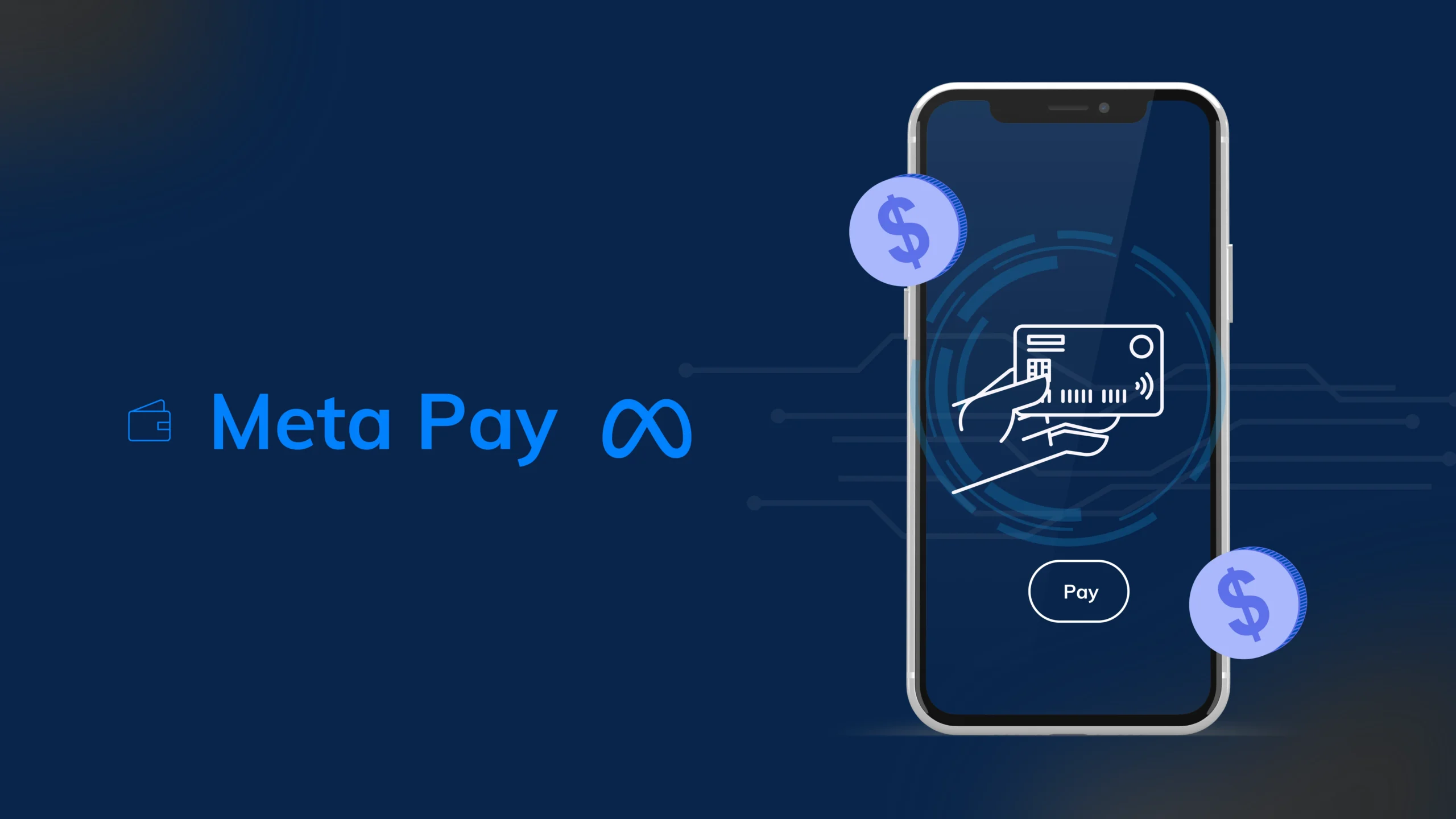Introduction: Meta Pay (Facebook Pay)
The digital payment landscape is undergoing its most radical transformation since the birth of e-commerce. At the epicenter stands Meta Pay – the financial engine powering interactions for 4.96 billion users across Facebook, Instagram, WhatsApp, and Messenger. Born as Facebook Pay in 2019, this digital wallet has evolved into a financial super app that seamlessly blends social media payments with futuristic crypto payments and metaverse transactions.
What makes Meta Pay revolutionary isn’t just its scale, but its ecosystem approach. Unlike traditional payment processors, Meta Pay operates natively within the platforms where users already spend 2.5 hours daily. This eliminates the cognitive friction of switching apps for online transactions, turning casual scrolling into instant commerce. Recent data shows merchants using Meta Pay see 36% higher conversions compared to external Fiat payment gateways, proving that convenience directly drives revenue.
The platform’s 2022 rebrand to Meta Pay signaled its ambitions beyond social payments. With integrations for Bitcoin and Ethereum, partnerships with virtual card providers like Getsby, and a roadmap for metaverse transactions, Meta is positioning itself as the Visa of Web3.
This guide unpacks everything from basic Meta Pay setup to advanced crypto integration, giving you the strategic advantage in the coming financial revolution.
What is Meta Pay – Beyond Facebook Pay
Meta Pay represents the consolidation of Meta’s financial infrastructure into a unified digital wallet. Unlike its predecessor Facebook Pay, which operated siloed within Facebook, Meta Pay enables cross-platform online transactions across all Meta-owned services. Functionally, it serves three core purposes:\
- Peer-to-peer payments (sending cash to friends)
- In-app purchases (buying digital stickers or game credits)
- E-commerce transactions (checking out on Instagram Shops)
- Donations to nonprofits and creators
- Crypto payments (Bitcoin/Ethereum transactions)
The system’s brilliance lies in its interoperability. Once you set up Meta Pay on Facebook, your payment methods automatically sync to Instagram, Messenger, and WhatsApp (where available). This eliminates repetitive card entry – a friction point that abandons 28% of mobile purchases according to Baymard Institute.
Key advantages driving adoption:
- Zero fees for standard transactions
- Military-grade encrypted payments
- Biometric authentication for security
- Support for credit/debit cards, PayPal, and prepaid cards
- Real-time settlement (funds arrive in minutes)
Unlike traditional banking apps, Meta Pay leverages your existing social graph. Sending money feels like sharing a photo – open a chat, tap the $ icon, and confirm with Face ID. This social-first approach explains its viral growth: while Venmo took 8 years to reach 40 million users, Meta Pay crossed 100 million in just 18 months.
Conclusion:
Meta Pay fundamentally reimagines social platforms as comprehensive financial ecosystems, seamlessly enabling secure, instantaneous transactions across Facebook, Instagram, Messenger, and WhatsApp. This transformation bridges the gap between social interaction and commerce through its robust crypto integration, Getsby virtual card support, and proven 36% higher conversion rates for businesses – turning everyday social engagement into economic opportunity.
By combining military-grade AES-256 encryption with biometric authentication and real-time fraud monitoring, Meta Pay delivers unprecedented security without compromising convenience. Its cross-platform functionality creates a unified payment experience across Meta’s ecosystem, while virtual cards provide both privacy protection and spending control – essential features in today’s digital economy.
Looking ahead, Meta Pay’s evolution toward metaverse transactions, augmented reality commerce, and integrated banking services signals a fundamental shift in financial interactions. Early adopters gain strategic positioning in the emerging $8 trillion social commerce landscape, where digital avatars will transact virtual goods and AR interfaces will enable “try-before-buy” instant purchases.
For businesses, this represents more than payment processing – it’s a competitive advantage in reaching Gen Z consumers who spend 2.5+ hours daily on Meta platforms. For users, it transforms passive scrolling into active economic participation. As social platforms evolve into financial platforms, embracing Meta Pay today means leading rather than following the digital finance revolution, where community engagement becomes commerce and social connections become economic networks.
Meta Pay FAQ Guide
What is Meta Pay and how does it work for businesses?
Meta Pay (formerly Facebook Pay) is a secure digital payment system developed by Meta Platforms, Inc. It enables businesses to accept payments seamlessly across Meta’s ecosystem including:
- Facebook Shops and Instagram checkout
- Messenger and WhatsApp transactions
- Shopify e-commerce sites via the Meta Pay button
Customers store payment details once for fast checkout across all platforms. Businesses receive payments directly through integrated payment processors.
How do customers use Meta Pay?
Customers can:
- Pay friends through Messenger or WhatsApp
- Purchase products on Instagram or Marketplace
- Buy event tickets on Facebook/Instagram
- Donate to fundraisers
- Check out instantly on e-commerce sites with Meta Pay integration
Users secure accounts with a custom PIN or biometric authentication. Payment methods include debit/credit cards or PayPal accounts.
What are the benefits of accepting Meta Pay?
Key advantages for businesses:
- Reduced checkout friction: One-click payments increase conversion rates
- Zero transaction fees: No cost to businesses or consumers
- Seamless social commerce integration: Sell directly through Facebook/Instagram
- Purchase protection: Coverage for undelivered or misrepresented items
- Enhanced security with encryption and fraud monitoring
What are Meta Pay’s limitations?
Important constraints:
- Platform restrictions: Limited availability (e.g., blocked in Wisconsin, unavailable outside US for Messenger payments)
- Delayed deposits: Payouts can take up to 30 days
- Basic functionality compared to competitors (limited reporting tools)
- Shopify dependency for non-Meta e-commerce integration
- No international transactions support
Is Meta Pay safe for business transactions?
+Yes, Meta Pay employs multiple security measures:
- Anti-fraud monitoring technology
- Bank-level encryption for payment data
- Separation of financial data from profile information
- Mandatory PIN or biometric authentication for payments
- Real-time transaction alerts
For added security, businesses should enable two-factor authentication and consider cyber liability insurance.
How much does Meta Pay cost businesses?
Meta Pay is completely free for both businesses and consumers. There are:
- No setup fees
- No transaction fees
- No monthly service charges
Note: Non-Shopify sellers pay standard Meta processing fees, and banks/PayPal may charge external fees.
Meta Pay vs. PayPal: Which is better for businesses?
Choose Meta Pay if you:
- Sell primarily through social media (Facebook/Instagram)
- Use Shopify e-commerce platform
- Prioritize fee-free transactions
- Have 1:1 customer interactions
Choose PayPal if you:
- Need universal acceptance across platforms
- Require advanced reporting tools
- Operate a multi-channel online store
- Need global scalability
How do businesses set up Meta Pay?
Setup depends on your platform:
- Shopify merchants: Enable in platform settings
- Non-Shopify websites: Partner with payment processors supporting Meta Pay integration
- Meta app sellers: Configure in Meta Business Suite
Deposits are typically instant or reviewed within 24 hours. Payouts may take up to 30 days.
Can Meta Pay improve social media sales?
Yes, businesses typically see:
- 15-30% higher conversion rates from reduced checkout steps
- Lower cart abandonment through seamless in-app purchases
- Increased buyer trust via Meta’s brand recognition
- Streamlined social selling without platform redirects
Beauty and wellness brands report the most significant improvements in conversion rates when using Meta Pay.
What payment methods do customers use with Meta Pay?
Customers can link:
- Major debit/credit cards (Visa, Mastercard, Amex, Discover)
- PayPal accounts (may incur PayPal fees for donations)
Note: Meta doesn’t currently support bank account direct links or cryptocurrency payments.





